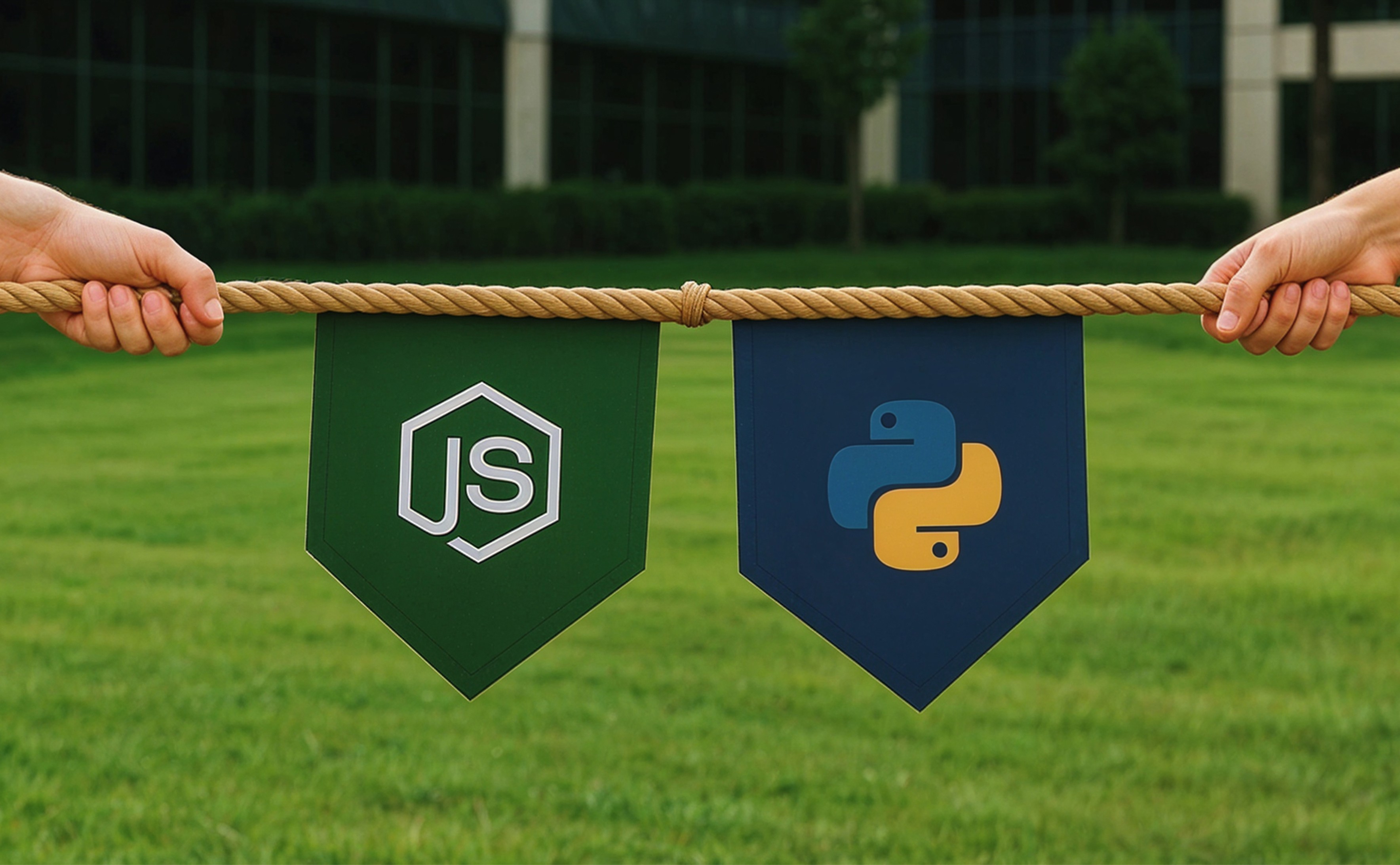Flutter vs. React Native: Which One to Choose in 2026?

- Just Look at Their Similarities: React Native vs Flutter
- Flutter vs React Native: Differences
- Flutter vs. React Native: A Detailed Comparison
- Pros and Cons of Flutter and React Native
- Real-world Examples of Flutter and React Native
- Use Cases: When to Choose Flutter or React Native
- Conclusion: Flutter vs React Native in 2025
- Just Look at Their Similarities: React Native vs Flutter
- Flutter vs React Native: Differences
- Flutter vs. React Native: A Detailed Comparison
- Pros and Cons of Flutter and React Native
- Real-world Examples of Flutter and React Native
- Use Cases: When to Choose Flutter or React Native
- Conclusion: Flutter vs React Native in 2025
The increase in mobile app usage was highlighted by the projection that total app market revenue would reach an astonishing $673.78 billion in 2027. Total revenue is expected to grow at a compound annual growth rate (CAGR) of 7.48% by 2029, with a projected market volume of US$781.70 billion. With the mobile app market experiencing rapid growth, businesses are prioritizing development approaches that balance speed, cost, and quality. This is where cross-platform development comes into play. In addition to making development easier, cross-platform application development also lowers expenses and expedites time-to-market.
As businesses weigh their options, the choice between Flutter and React Native remains a key discussion in 2025. These two frameworks have revolutionized the industry by empowering developers to produce visually stunning, feature-rich, and lightning-fast applications. The catch is that there is no one-size-fits-all solution when it comes to selecting Flutter or React Native. The decision between Flutter and React Native depends on performance, usability, and business requirements.
As of the 2023 developer survey, Flutter was ranked as the most-used cross-platform mobile framework, with 46% of developers using it. Flutter has risen remarkably in popularity due to its high performance and comprehensive library of widgets. It is built on the Dart programming language. Among its strongest features, Flutter benefits from the support of hot reload, allowing developers to see immediate visual feedback on code modifications.
On the other hand, React Native remains a popular choice, with 35% of developers using it. Web developers switching to mobile development find it most convenient, given that React Native relies on JavaScript.
This article provides an in-depth React Native vs Flutter comparison, helping you evaluate which framework aligns the best with your app development goals. Whether you’re considering a Flutter or React Native development company for your next project, this guide will assist you in making an informed decision.
Just Look at Their Similarities: React Native vs Flutter
1. Cross-Platform Development – One Codebase, Multiple Platforms
With Flutter and React Native, developers can use one codebase to make both iOS and Android mobile applications, which in turn minimizes maintenance effort, costs, and development time. Regardless of the technology a company chooses, it will still have the benefit of a shorter time to market and maintain a consistent user experience across multiple platforms.
2. Open-Source with Strong Developer Communities
React Native as well as Flutter are used by developers who want to utilize a broad range of resources and access the source code, as both of them are open-source frameworks. They are both very popular and constantly being developed, and the community that supports them is really big. You should not attribute all the resources for community support to a single framework, but the fastest-growing ones have a well-determined community that is interested in the long-term development of that technology. The ecosystem is very strong and full because new maintenance services, libraries, and tools are frequently added.
3. Hot Reload – Real-Time Code Changes for Faster Development
The hot-reload feature allows developers to run the application and view the changes immediately without having to restart it. For businesses that need to create mobile applications rapidly, Flutter and React Native are highly recommended due to their capacity to expedite debugging, permit UI modifications, and support iterative development.
4. Near-Native Performance for High-Quality Apps
Both Flutter and React Native are not entirely native, but both of these allow for smooth and responsive applications, ensuring excellent performance. React Native simulates native-like performance by connecting JavaScript with the native components, but Flutter typically operates a little faster, thanks to a composite rendering engine (Skia).
5. Extensive Third-Party Plugins & Libraries
Numerous third-party plugins and modules are available for both React Native and Flutter that make it easy to build complex features. Pre-built solutions are found in both frameworks for any requirements, eliminating the need for specific custom development whether using analytics tools, push notifications, payment gateways, or authentication. Thus, it is a great choice for businesses that require feature-rich, scalable apps with little custom coding effort.
Flutter vs React Native: Differences
| Feature | Flutter | React Native |
|---|---|---|
| Programming Language | Dart | JavaScript (TypeScript) |
| UI Components | Widgets | Native Components |
| Performance | High (compiled to native) | Bridgeless |
| Community Support | Growing | Mature and extensive |
| Development Speed | Faster UI design | More extensive libraries |
| App Size | Larger | Smaller |
Not sure whether Flutter or React Native fits your project?
Reach out to usLoading...
Flutter vs. React Native: A Detailed Comparison
Performance
Flutter's Ahead-of-Time (AOT) compiler enables it to compile its code natively into optimized binaries for iOS and Android. Flutter has a high-performance rendering engine, Impeller, that enhances UI fluidity and responsiveness compared to other frameworks that rely on a bridge. With the ability to run at 60 frames per second—and up to 120 fps on hardware that supports it—it provides a smooth, fast, and highly interactive user experience.
React Native, on the other hand, uses a sophisticated JavaScript virtual machine that beats V8 in terms of efficiency by making use of a Just-In-Time (JIT) compiler. Since it is a pre-compiled framework, code can be compiled into a native executable, ensuring performance almost as good as that of true native applications. React Native performs extremely well on iOS, often running without having to manually tweak the iOS build configuration.
Winner: Flutter
Command line interface (CLI)
Flutter comes with a built-in command line interface (CLI) that provides tools such as Flutter Doctor to diagnose which tools you have already installed and to check their version. This way, developers get a head start on their new Flutter app project's preparation, making it much easier and faster.
React Native, on the other hand, requires additional technical expertise to install. React Native is equipped with Expo, tool to make development less complicated. App developers can easily test their apps using their mobiles together with Expo Client without needing Android Studio or Xcode. Expo CLI also enables the users to debug, develop, and deploy the code, as well as compile it.
Winner: Flutter
Documentation
Flutter's comprehensive and well-organized documentation is aimed at teaching new developers how to use and implement the technology. The interactive widget catalog equips users to inspect, learn, and understand UI components by interacting with them. As a result, Flutter has put in place codelabs and tutorials that allow for a hands-on coding experience, providing a background for a more streamlined learning process. Moreover, the documentation is designed in a way that each platform (Android, iOS, and Web) gets clear and focused guidance regardless of a developer's background.
React Native’s documentation is community-driven, benefiting from extensive contributions from developers worldwide. It's all about presenting and breaking down the concepts in an easily understandable way using examples and code snippets. Besides, React Native makes a distinction between its core and community modules, which helps developers to be clear on what is officially supported and what third-party additions are. Because of its maturity and the number of active contributors, React Native has a huge variety of third-party support, such as tutorials, articles, and, last but not least, third-party documentation.
Winner: Flutter
Community Support
React Native is a better choice, thanks to its broad support from developers. This large network of supporters includes a great set of resources, forums and 3rd party libraries, thus making problem-solving possible the whole time. On the other hand, the Flutter community is in the process of expansion due to Google's substantial assistance. Even though Flutter is becoming more popular, it fails to provide the resources easily available compared to React Native.
Winner: React Native
Hot Reload
Flutter's efficient and speedy hot reload feature allows UI changes to be visualized instantly without running the application in restart mode. It facilitates immediate updating of the application's state with minimal intervention and updating of the content by the application quickly. Therefore, Flutter is beneficial for short development cycles.
Fast Refresh, a feature in React Native that provides a parallel real-time reload, may not be the best alternative for complex codes. Instead of safeguarding the application's state during the changes, the reliability and speed of Fast Refresh, compared to Flutter's hot reload, can sometimes be lower.
Winner: Flutter
Debugging
With built-in tools like the Flutter Inspector, which offers comprehensive insights into rendering and performance, Flutter offers a more integrated and user-friendly debugging experience. On the other hand, React Native uses Chrome DevTools for JavaScript debugging and depends on external debuggers such as Flipper. Both platforms offer strong debugging tools, but Flutter's built-in features make it easier to spot errors. On the other hand, React Native provides flexibility with its many third-party options. Despite the solid capabilities of both debugging platforms, Flutter stands out with tools like the Flutter Inspector, which delivers a more seamless and integrated debugging experience.
Winner: Flutter
Packages and libraries
NPM packages make the React Native library have a more extensive and mature list of packages and modules. This gives developers the advantage of accessing different third-party solutions. But the Flutter ecosystem, hosted on pub.dev, is expanding rapidly and offers well-integrated solutions. Although it does a good job in some areas, it is nowhere near React Native when it comes to flexibility. On the other hand, the reliability factor is what makes Flutter's packages the best choice and what makes them fit better and more naturally in the system.
Winner: React Native
Maturity
React Native is a more established platform with a longer history of development, a larger community, and a reliable ecosystem. On the other hand, Flutter is emerging as an appealing alternative for its performance and cross-platform features, yet it is new when compared to React Native.
Winner: React Native
Cross-platform capacity
Flutter seamlessly showcases cross-platform functionality with its own set of widgets. It provides native-level performance, a uniform user interface on all platforms, and ample customization options. React Native, however, utilizes common components that can lead to cross-platform inconsistencies.
Winner: Flutter
Material Design
With its native widgets, Flutter provides a seamless and native interaction with Material Design, making UI development easier. React Native, however, relies on third-party libraries such as Material UI, which requires more maintenance and adjustment in order to achieve a similar look and feel.
Winner: Flutter
Pros and Cons of Flutter and React Native
| Feature | Flutter Pros | Flutter Cons | React Native Pros | React Native Cons |
| UI | Custom UI & smooth animations | Larger app size | Native look & feel | UI inconsistencies |
| Performance | Faster execution | Heavy initial load time | Good performance | Slower than Flutter |
| Learning Curve | Easier with Dart | Dart adoption is limited | JavaScript familiarity | Requires third-party dependencies |
| Development Speed | Faster UI development | Newer, fewer libraries | More ready-to-use components | Performance optimization needed |
Real-world Examples of Flutter and React Native
Flutter
- Google Ads: Flutter has been utilized for building Google's official advertising platform app. Marketers are provided with push notifications, performance insights, and campaign updates in real-time through an easy-to-use interface.
- Alibaba: Alibaba, one of the biggest e-commerce sites in the world, uses Flutter to power several of its apps. It ensures a uniform UI and a seamless shopping experience across iOS and Android.
- eBay Motors: Flutter is utilized in the creation of eBay Motors for the purchase and sale of vehicles. The app offers a smooth surfing experience, enables users to post listings quickly, and accommodates the uploading of pictures, all due to Flutter's high-performance rendering.
- BMW: Flutter is utilized by the luxury automobile company BMW in order to enhance their mobile experience, providing users with a uniform and visually appealing interface across all operating systems.
React Native
- Facebook: Facebook developed React Native and used it to make their app. Fully developed on React Native, Facebook Ads Manager is a simple-to-use platform for advertising product ads by individuals and business corporations. Though cross-platform, it does not handle differences in UI due to ads date formats, transitions, and animation of the UI efficiently.
- Instagram: Instagram integrates React Native in parts of its app to enhance performance, streamline updates, and offer cross-platform consistency.
- Airbnb: Airbnb first chose React Native for mobile development since it makes code transferable between platforms possible. Later, for some app components, they shifted to native development.
- Uber Eats: With the help of React Native, Uber Eats' restaurant dashboard makes it simple for restaurant partners to handle menus and orders on iOS and Android smartphones.
Use Cases: When to Choose Flutter or React Native
When to Choose Flutter
1. Apps Requiring High-Performance Graphics
Flutter is ideal for applications that require smooth animations, rich graphics, or high-performance graphics, such as gaming or multimedia applications. Its Impeller engine processes graphics natively, providing quick rendering and little lag.
2. Consistency Across Platforms
If businesses demand to have the same look and feel of the app on iOS, Android, and other platforms, Flutter is the way to go. It guarantees a uniform experience on both platforms with its own Material Design widgets for Android and Cupertino widgets for iOS.
3. Rapid Prototyping or MVP Development
This framework is ideal for producing MVPs (Minimum Viable Products) or prototypes quickly because of its hot reload capability and short development cycle.
4. Future-Proof Projects
With Google's support, Flutter keeps getting better and now supports desktop and web applications. If you plan to extend your app beyond mobile in the future, Flutter is a great choice.
5. Complex Cross-Platform Needs
For apps that must operate on web, mobile, and desktop—or have custom animations and complex layouts—Flutter's shared codebase method guarantees top-level performance without trade-off.
When to Choose React Native
1. Native-Like Apps
React Native essentially uses the real native building blocks of each platform, due to which the application looks and feels like actual Android or iOS apps. Simply put, it's just like the case of the applications crafted for each platform independently, where developers strictly follow the rules of design set by their ecosystem.
2. Leveraging Existing Web Development Expertise
For a team that is already proficient with JavaScript, React.js and TypeScript, using React Native will be seamless. They certainly don't have to learn a new language like Dart from Flutter.
3. Need a Large Plugin Ecosystem
Due to its greater popularity, React Native has an extensive library of third-party packages and plugins that are accessible through NPM. This makes it simpler to incorporate features like payment gateways and analytics libraries.
4. Frequent Updates and Iterations
React Native is perfect for apps that require frequent updates or rapid revisions because of its Fast Refresh feature, which lets developers view changes in real time.
Conclusion: Flutter vs React Native in 2025
Flutter and React Native remain the top choices for cross-platform development in 2025.
So, which is superior, Flutter or React Native? Everything will depend on what the project requires! For instance, Flutter is a good choice if scalability, a clean UI, and top-notch graphics are your top concerns. But if you need native-like features, quick iterations, and seamless connection with a JavaScript-based system, React Native is a better option.
Through our Flutter and React Native development services, WAC developers are equipped to assist companies in quickly developing scalable, high-performance apps. Whether you require a rich visual experience or cross-platform software with a native-like look, our professionals ensure you get the optimum solution. Need extra support? You can hire Flutter developers or hire dedicated React Native developers from WAC to seamlessly scale your team with top-tier talent. Contact us and let us help you!
Building a cross-platform app?
Let's talkLoading...
Discover Digital Transformation
Please feel free to share your thoughts and we can discuss it over a cup of tea.









